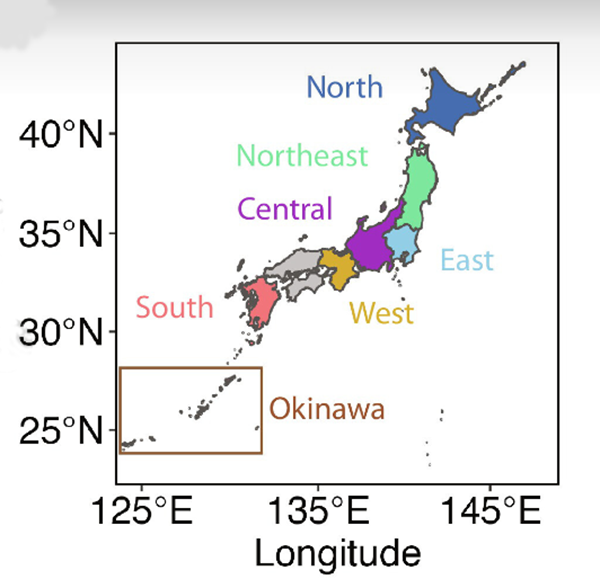May 9, 2024 Press Release Biology
Decoding the three ancestral components of the Japanese people
A research group led by scientists from the RIKEN Center for Integrative Medical Sciences in Japan have used whole-genome sequencing to unravel the complex ancestry of the Japanese population. The analysis supports an earlier study that proposed that the Japanese population originated from admixtures of three ancestral groups, challenging the long-held dual-structure model, and also provides new evidence of Neanderthal and Denisovan influences in the population.
The study, published in Science Advances, started with the group performing whole-genome sequencing on 3,256 samples from the Biobank Japan—a large collection of samples collected from hospitals in Japan. The samples were chosen to reflect the population distribution of Japanese throughout the archipelago, from Hokkaido in the northeast to Okinawa and the other Ryukyu islands in the south.
The first finding was that the Japanese population can be optimally divided into three clusters, with different concentrations in Okinawa, Northeastern Japan, and Western Japan. While it was previously believed that the current Japanese people are mainly descended either from the indigenous Jomon population or other East Asians, principally Han Chinese, the research group found that there is also a Northeast Asian ancestry, which is likely composed of people from the Korean peninsula or from early non-Jomon Japanese populations. They found that Jomon ancestry was most dominant in Okinawa, where it made up 28.5 percent of the sampled people’s DNA, though it also made up roughly 19 percent in Northeastern Japan and 12 percent in Western Japan, and was slightly higher in the south of Japan, closest to Okinawa. The East Asian ancestry, generally understood to be from China, was most common in Western Japan, gradually decreasing to the east, while the Northeast Asian lineage was most common in Northeastern Japan, decreasing to the west.
To see whether these findings could provide insights into clinically relevant genetic variants, they examined two well-known pathogenic variants associated with hereditary breast cancer. The first, a variant of the BRCA1 gene, is only found in Japanese populations, and is more common in the east than the west of the country. This implied that it arose in Japanese people with Northeast Asian ancestry and then spread westward. The other, a variant of the BRCA2 gene, is more common in the west, and is also found in China and Korea, leading to the conclusion that this variant was likely brought into Japan from continental Asia.
The study also offered insights into gene sequences derived from Neanderthals and Denisovans—extinct human lineages that existed together with modern humans and left us genes through a process known as introgression, a gradual movement of genes from one lineage into another through hybridization. Specifically, they found gene sequences associated with type 2 diabetes and height derived from Denisovans, and while they mostly confirmed previous studies regarding gene introgressions from Neanderthals, they also found an interesting link to another gene associated with type 2 diabetes, which might affect sensitivity to semaglutide, an oral agent used to treat the disease.
According to Chikashi Terao, leader of the research group, “Though our findings were interesting because of the new insights they have given us into the origins of the Japanese people, we also believe that our work will serve as a reference for future genetic research beyond the Japanese population, as it could be used in areas such as personalized medicine.”
Rate this article
Reference
Contact
Chikashi Terao, Team Leader
Laboratory for Statistical and Translational Genetics
RIKEN Center for Integrative Medical Sciences
Jens Wilkinson
RIKEN International Affairs Division
Tel: +81-(0)48-462-1225
Email: jens.wilkinson [at] riken.jp

Map showing the regions of Japan
